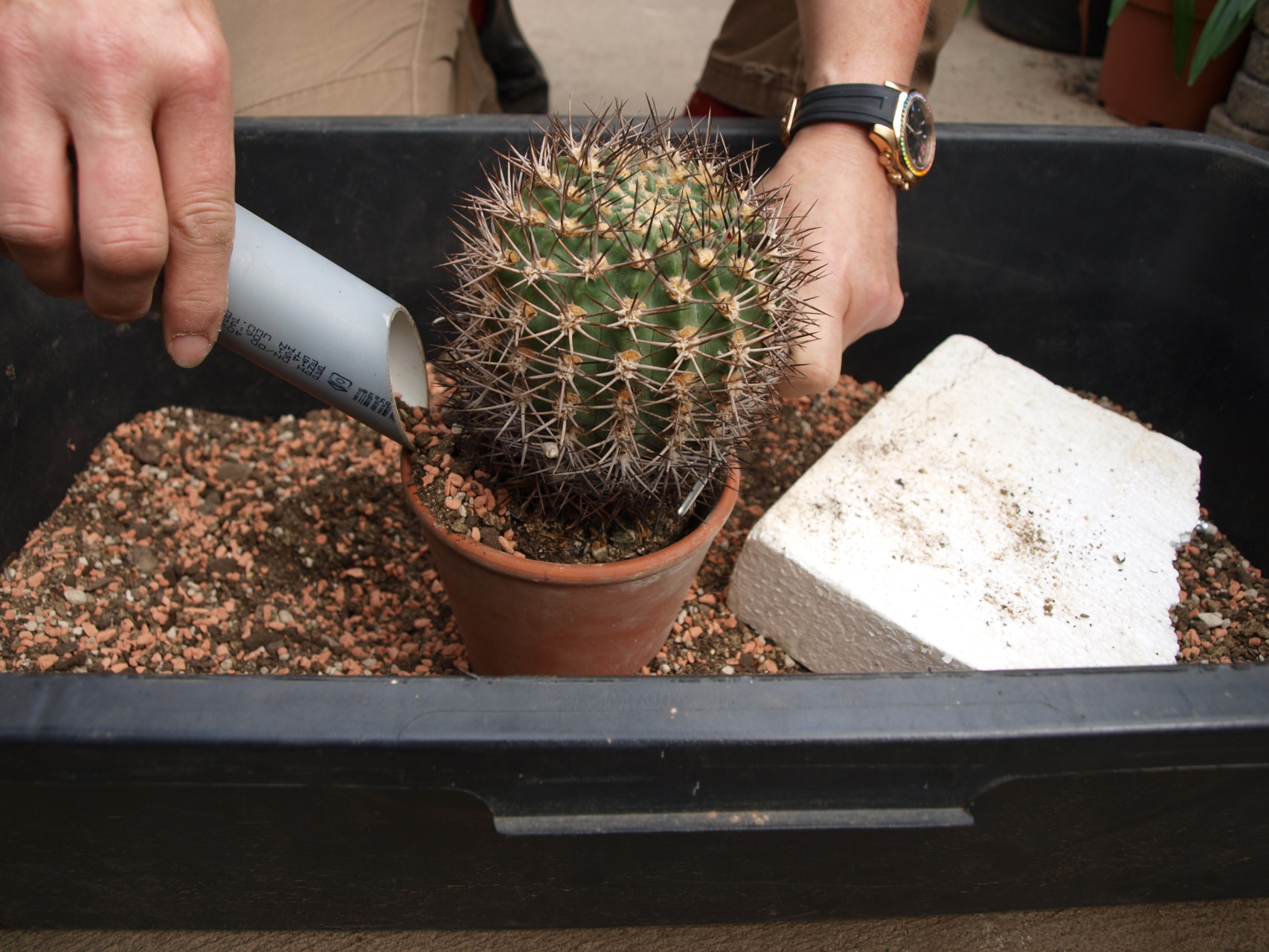Repotting cacti comes with certain challenges due to their unique characteristics, which need to be carefully managed. If you're unsure how to proceed with repotting your spiky friend, you can find inspiration here with practical tips and advice on the proper handling of the plant.
When to Repot Cacti:
The best time to repot cacti is in the spring when they begin to actively grow. This allows the plant to adapt more quickly to new conditions and avoids stress that could occur when repotting at other times of the year.
Preparation Before Repotting:
Before starting the repotting process, gather all the necessary tools:
- Protective gloves or Styrofoam: To avoid painful injuries from the spines.
- New pot: The new pot should generally be slightly larger than the previous one to give the cactus enough room to grow. However, if there are many rotten roots on the root ball, you may need to downsize the pot. It is recommended to choose ceramic (terracotta) pots that are not glazed, as the material breathes better. The pot must have a drainage hole.
- Soil: A special cactus mix that drains well and is airy.
- Tools: A small trowel, tweezers, a stick, and possibly a brush to remove old soil from the roots.
Steps for Repotting:
- Carefully Remove the Cactus: Use protective gloves or wrap the spines gently with newspaper or Styrofoam. Remove it from the pot carefully to avoid damaging the roots.
- Remove Old Soil: Use your hands, a brush, or gently blow off the old soil, removing excess substrate from the root ball. Check if the roots are damaged, dead, or infested with pests.
- Inspect the Roots: If roots are too long or damaged, trim them carefully with sterilized scissors. Let the roots dry for several hours to allow the cuts to heal.
- Prepare the New Pot: Choose a suitable pot based on the size of the root ball. It doesn't need to be too large—just a few centimeters wider than the cactus’s body. Ensure it has a drainage hole.
- Prepare the Substrate: Add a drainage layer to the bottom of the new pot. Suitable materials include gravel, pebbles, or pumice. Cover the drainage with a layer of new cactus soil. Choose a well-draining and airy mix to prevent water retention and root rot. Good aerating components are perlite, pumice, coarse and fine sand, or small gravel. Some also use lava or clay granules, which are porous materials of natural origin mixed with soil for optimal composition.
- Repot the Cactus: Use tweezers or gloves to handle the plant. Place the cactus in the center of the pot and fill it with the prepared substrate. Make sure the cactus is firmly positioned without compressing the roots. The soil layer should fill the space between the bottom and the roots. Fill in any missing soil with a funnel and pack it into the pot with a stick.
- Watering After Repotting: Do not water the cactus immediately after repotting. Wait a few days to allow the roots to adapt to the new environment and to prevent root rot. It's a good idea to label the new plant.
Care After Repotting:
Place the cactus in a bright location, but avoid direct sunlight to prevent burning. Water it sparingly, gradually increasing the watering as needed. Observe how the plant adapts to the new conditions and adjust care accordingly.
Conclusion:
Repotting cacti requires some caution and preparation, but with the right tools and procedures, it's a manageable task. Remember to protect yourself from the spines and provide thorough care after repotting. Your cacti will appreciate the fresh and comfortable environment where they can continue to grow and thrive.
